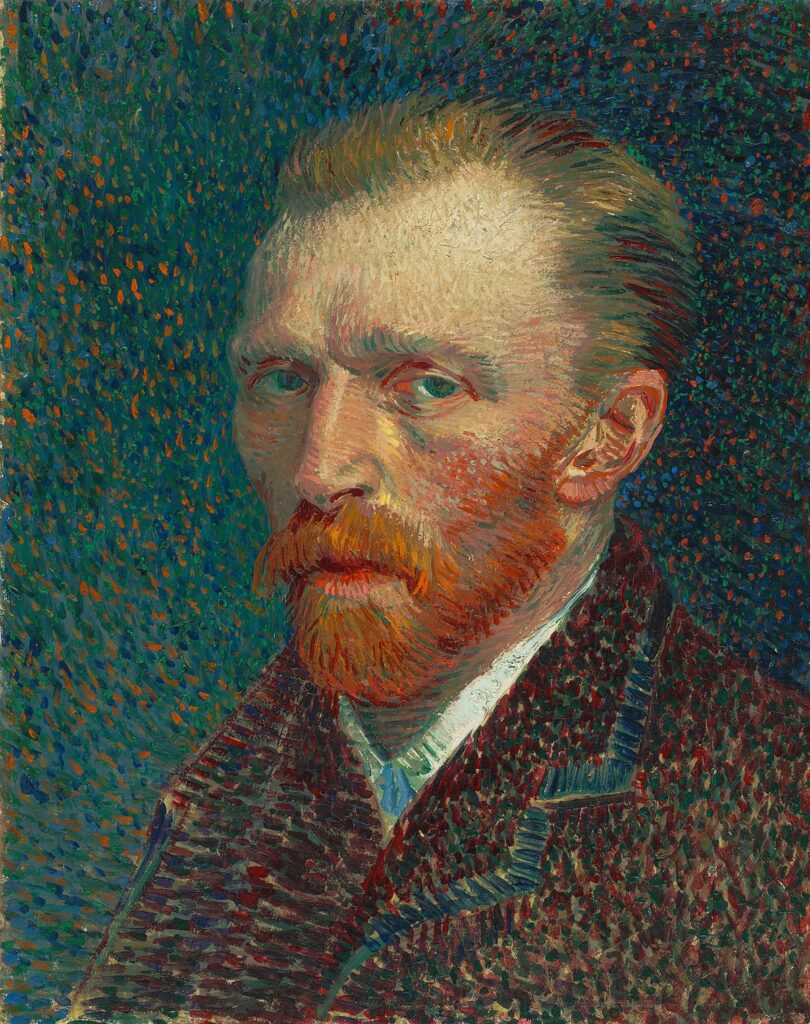Hey there! Let’s embark on a journey through the vivid and passionate world of Vincent van Gogh, the legendary artist who made colors dance on his canvas. In this blogpost, we’re going to chat about van Gogh’s fascinating life, zoom in on one of his masterpieces – Self Portrait with Bandaged Ear, and unravel some intriguing tales about the painting.
Who was Vincent van Gogh?

Vincent van Gogh wasn’t your run-of-the-mill artist. He was a Dutch painter who lived way back in the 1800s, and he had this incredible knack for splashing intense colors onto his canvases. Life threw its share of challenges at him, but his art from those days is still turning heads around the globe.
His Career
Picture this: the late 1800s, a time when van Gogh’s artistic journey took flight. He experimented with different styles until he discovered his own unique way of doing things. Nature, colors, and emotions were like his artistic buddies. Even though the world didn’t quite get what he was doing back then, today, people everywhere think of him as a big deal in the art world.
What is happening in Self Portrait with Bandaged Ear?

| Artist | Vincent van Gogh |
| Date Painted | 1889 |
| Medium | Oil on canvas |
| Genre | Self-portrait |
| Period | Post-Impressionism |
| Dimensions | 60 cm × 49 cm |
| Series/Versions | One version |
| Where is it housed? | Courtauld Gallery, London |
Now, close your eyes and transport yourself to the year 1889. Van Gogh decides to paint a picture of himself. But this isn’t your typical selfie. In this one, he’s got a bandage on his ear. Curious, right? Well, it’s not just a random accessory. It’s there because he went through a really tough time and did something quite dramatic – he actually cut off a part of his own ear. The painting is like a freeze-frame from the rollercoaster of emotions he was riding.
Analysis of Self Portrait with Bandaged Ear
Now, let’s break down this masterpiece. First off, it’s a burst of color – like van Gogh’s feelings just exploded onto the canvas. Look into his eyes; they’re intense, like he’s telling a story without using words. The bandaged ear is like the superhero mask in this painting, showing the world the tough time he was going through. And those brushstrokes? They’re like fireworks, dancing around and adding life to the chaos.
Interesting Facts
Symbolism of Colors: Imagine using colors to tell a story. Van Gogh did just that. The reds and greens in the painting? They’re like a battle of emotions inside him. And the blue background? It’s like a hint of feeling alone or a bit sad.
The Infamous Ear Incident: Picture this: One day in 1888, van Gogh, feeling really down, decides to do something bold. He cuts off a piece of his own ear. It was his way of asking for help when things got too tough.
Courtauld Gallery: Now, where do you find this painting? In the Courtauld Gallery in London. If you ever find yourself in London, you can check out this piece of art history and feel the intensity van Gogh poured into it.
Singular Version: Unlike some of his other paintings, there’s only one version of this self-portrait. It’s like a snapshot frozen in time, capturing a moment of van Gogh’s life.
Expression Through Brushstrokes: Take a closer look at those wild brushstrokes. They’re not just random; they’re a symphony of emotion. Van Gogh didn’t just paint; he poured his heart onto the canvas with every stroke.
Frequently Asked Questions
What does Self-Portrait with Bandaged Ear represent?
Van Gogh’s Self-Portrait with Bandaged Ear is thought to be proof of his deteriorating physical and mental health. Van Gogh’s attempts to demonstrate his health are also shown to the audience. Van Gogh doubted the quality of his own paintings. He made an effort to hone his artistic ability, skills, and technique.
Why did Van Gogh cut his ear?
After working for some time in Arles with the artist Paul Gauguin, Vincent van Gogh lost his cool and cut his left ear. Van Gogh’s condition became apparent when he started to have hallucinations and experienced episodes where he passed out. He made use of the knife in one of these attacks.
Conclusion
Self Portrait with Bandaged Ear is like van Gogh’s diary entry in paint. It shows us how he turned his tough times into art that still speaks to us today. As we look closely, we not only see the pain he felt but also the incredible way he turned it into something timeless. It’s a reminder that art is not just about pretty pictures; it’s about feelings and stories that connect us across time. So, here’s to exploring the emotional palette of van Gogh’s world and discovering the magic hidden in the strokes of his brush.













